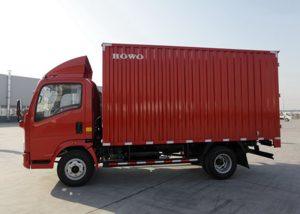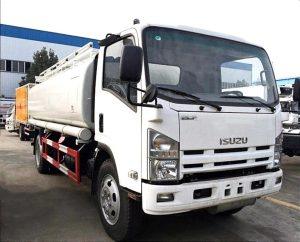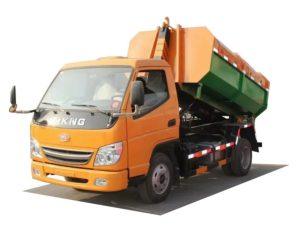Monday to Saturday - 8:00 -17:30
What is a Winter Storm? Understanding Nature’s Cold Fury
Winter storms can be both beautiful and destructive, bringing along snow, ice, and cold temperatures. But what really defines a winter storm? In this article, we will delve into the details of winter storms, their types, formation, effects, and how to prepare for them. Understanding winter storms is crucial for safety and preparedness, especially for those living in regions prone to severe winter weather.
Table of Contents
- 1. Definition of a Winter Storm
- 2. Types of Winter Storms
- 3. How Winter Storms Form
- 4. Impacts of Winter Storms
- 5. Preparing for a Winter Storm
- 6. Safety Tips During a Winter Storm
- 7. Common Myths about Winter Storms
- 8. Notable Winter Storms in History
- 9. FAQ
1. Definition of a Winter Storm
A winter storm is a weather phenomenon that produces a combination of snow, sleet, freezing rain, or other winter precipitation, leading to hazardous conditions. The National Weather Service (NWS) classifies winter storms based on specific criteria, including precipitation type, wind speed, and temperature. Such storms can vary in intensity, duration, and geographical area affected.
2. Types of Winter Storms
Winter storms are categorized into several types, each with different characteristics and impacts. Here are the main types of winter storms:
2.1 Snowstorm
A snowstorm is characterized by significant snowfall over a short period, usually more than 6 inches within 12 hours. High winds can accompany snowstorms, leading to blizzard conditions.
2.2 Ice Storm
Ice storms occur when temperatures hover around freezing, causing rain to freeze upon contact with cold surfaces. This can create a dangerous layer of ice on roads, power lines, and trees.
2.3 Blizzard
A blizzard is a severe snowstorm with sustained winds of at least 35 mph, reduced visibility, and significant snowfall. Blizzards can pose life-threatening conditions, especially for those caught outdoors.
2.4 Sleet Storm
Sleet storms produce small ice pellets formed when rain freezes as it falls. Sleet can accumulate on surfaces, causing dangerous travel conditions.
2.5 Freezing Rain
Freezing rain falls as liquid drops but freezes on colder surfaces, forming a glaze of ice. This can be particularly hazardous for transportation and utilities.
3. How Winter Storms Form
The formation of winter storms involves several meteorological elements:
3.1 Moisture
Winter storms need moisture in the atmosphere. This moisture usually comes from warm air masses that collide with colder ones.
3.2 Temperature
For a storm to be classified as a winter storm, temperatures must be low enough for precipitation to fall as snow, sleet, or freezing rain.
3.3 Atmospheric Pressure
The presence of low-pressure systems is critical for storm formation. These systems create updrafts that allow moisture to rise, cool, and fall as precipitation.
3.4 Fronts
A cold front can help initiate the conditions necessary for winter storms by pushing warm, moist air upward where it can cool and condense.
4. Impacts of Winter Storms
Winter storms can have a variety of impacts on communities, infrastructure, and individuals:
4.1 Transportation
Snow and ice accumulation can create hazardous driving conditions, leading to accidents and road closures. Public transportation services may also be disrupted.
4.2 Power Outages
Ice accumulation on power lines can cause outages. Falling trees due to heavy ice can damage power lines, leading to widespread blackouts.
4.3 Economic Effects
Winter storms can have significant economic impacts, leading to lost productivity, increased heating costs, and emergency response expenditures.
4.4 Health Hazards
Cold weather can pose health risks, including hypothermia and frostbite. Additionally, slippery sidewalks and roads can lead to falls and injuries.
4.5 Property Damage
Accumulation of heavy snow or ice can lead to structural damage, roof collapses, and fallen trees, affecting homes and businesses.
5. Preparing for a Winter Storm
Preparation is key to minimizing the impact of winter storms. Here are some steps you can take to be ready:
5.1 Emergency Kit
Assemble an emergency kit that includes:
- Water (1 gallon per person per day for three days)
- Non-perishable food (at least a three-day supply)
- Flashlights and extra batteries
- First aid kit
- Radio (preferably battery-operated)
- Warm clothing and blankets
5.2 Stay Informed
Monitor weather reports through local news, weather apps, or government alerts. Knowing when a winter storm is approaching allows you to prepare in advance.
5.3 Home Preparations
Secure your home by insulating windows and doors, clearing gutters, and ensuring your heating system is functioning correctly.
5.4 Vehicle Readiness
Keep your car winter-ready with:
- Winter tires with good tread
- Antifreeze
- Emergency kit including a blanket, food, and water
6. Safety Tips During a Winter Storm
Staying safe during a winter storm is paramount. Here are essential tips:
6.1 Stay Indoors
During severe winter storms, remain indoors and avoid travel unless absolutely necessary.
6.2 Keep Warm
Wear layers of clothing to retain body heat. Have blankets available if the power goes out.
6.3 Check on Neighbors
If it’s safe to do so, check on vulnerable neighbors, especially the elderly or those with mobility issues.
6.4 Avoid Using Generators Indoors
Generators should be used outdoors to avoid carbon monoxide poisoning. Ensure they are placed away from windows and doors.
7. Common Myths about Winter Storms
There are several myths surrounding winter storms that can lead to misunderstandings:
7.1 Myth: It’s Just Snow – No Big Deal
Snow accumulation can be misleading; even a light snowfall can become hazardous, especially if temperatures drop or ice forms.
7.2 Myth: All Winter Storms Are the Same
Each winter storm is unique based on its type, intensity, and environmental conditions; preparation strategies may vary.
7.3 Myth: You Can’t Travel During a Snowstorm
While travel is often discouraged, it’s possible to travel safely with the right preparations, vehicle maintenance, and awareness of road conditions.
8. Notable Winter Storms in History
Several winter storms have made headlines due to their severity and impact on communities:
8.1 The Great Blizzard of 1888
This devastating blizzard struck the Eastern United States, bringing 40-50 mph winds and snow accumulation of over 4 feet in some places. Thousands were stranded, and the storm claimed more than 400 lives.
8.2 Snowmageddon (2010)
In February 2010, a major winter storm impacted the Mid-Atlantic region, leading to over 24 inches of snow in some areas and paralyzing cities like Washington D.C. Public transport was severely disrupted, and power outages were widespread.
8.3 Winter Storm Jonas (2016)
This storm brought record-breaking snowfall to the Eastern seaboard, with Washington D.C. receiving 2 feet. The storm caused significant disruptions to travel and business operations across several states.
9. FAQ
9.1 What should I do before a winter storm?
Prepare an emergency kit, ensure your home and vehicle are winter-ready, and stay updated on weather forecasts.
9.2 How can I stay safe during a winter storm?
Stay indoors, keep warm, avoid travel unless necessary, and ensure your home is adequately insulated and stocked with supplies.
9.3 Can winter storms happen in tropical regions?
While rare, winter storms can occur in subtropical regions during unusual weather patterns, albeit with less frequency and severity.
9.4 How are winter storms forecasted?
Meteorologists use weather models, satellite data, and radar to predict the likelihood and severity of winter storms, often issuing watches and warnings based on this information.
9.5 What is the difference between a winter storm and a blizzard?
A winter storm may involve various types of precipitation, while a blizzard is specifically characterized by low visibility, high winds, and significant snowfall.
9.6 How can I report a winter weather emergency?
Contact local emergency services or use the designated channels provided by your state or local government for reporting emergencies.









